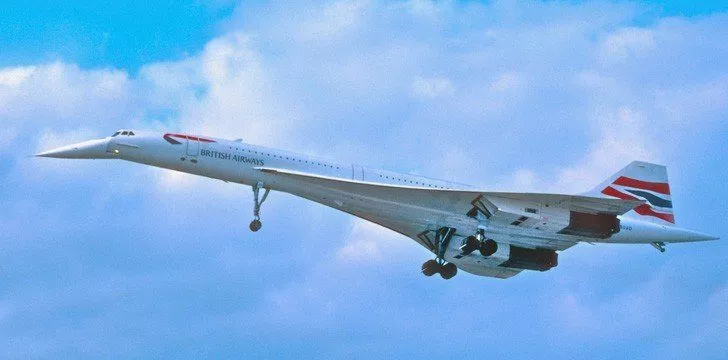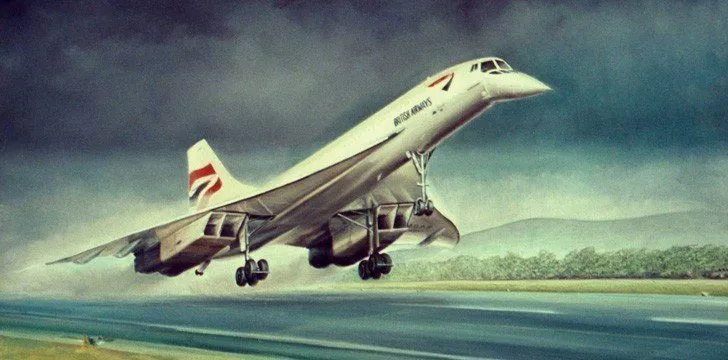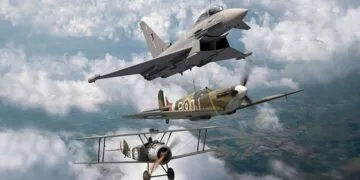From the Wright Brothers to NASA, flight and more importantly conquering the air has always been a dream and a passion of man.
We can’t seem to be happy with what we have, whether that was hot air balloons and the airplane, or the dual winged wind-up to the supersonic mega power, we always strive to get higher, go faster and do it more efficiently.
The most well-known plane of them all has to be the Concorde, a European invention that has won the world over and taken many across the globe.
Here we’re going to look at the life and death of this amazing craft.
November 4, 1956
On this day, The Supersonic Transport Advisory Committee was established to look into the possibility of supersonic air travel for commercial jets.
The team produced numerous reports proving that a commercial craft of this caliber was possible.
This committee included experts from all aspects of public and private aerospace engineering.
January 1, 1963
1963 was the first major step in the Concorde’s life.
After a quick flick through a thesaurus by a British Aircraft Corporation senior figure, the name Concorde is created.
May 1, 1963
Filton and Toulouse were 2 unassuming areas that would soon become a booming hub when it came to the supersonic giant.
Concorde confirmed that 40% of the airframe and 60% of the engine were to be U.K. built.
December 11, 1967
Once again, Toulouse became the superstar for this construction.
In 1967 the French base housed the first prototype, the 001, in the Aerospatiale plant.
March 2, 1969
At a rate of 250 knots and an altitude of 10,000 feet, the 001 prototype had its first flight from Toulouse.
A month later in April, Britain’s prototype had its first flight.
A momentous day for the 001, the supersonic Concorde managed to reach Mach 1, or in simpler terms, Supersonic flight.
November 4, 1970
The Concorde 002 is born, and the Mach 2 barrier is broken.
In 1970 the Concorde finally reached one of Britain’s biggest airports; Heathrow.
June 1, 1972
The Concorde starts a tour of Australia, the UAE, and other countries to complete a 45,000-mile sales tour of the world.
September 26, 1973
The 002 Concorde crosses the Atlantic for the first time, going from Washington to Paris in just over 3 and a half hours.
December 6, 1973
The maiden flight of the first-ever production Concorde was carried out, the 201 made in Toulouse took to the skies and hit Mach 1.57 or 1,205 miles per hour!
January 21, 1976
From London to Bahrain, captained by Norman Todd, the first flight of BA (British Airways) first-ever Concorde took to the skies.
The plane had only arrived a few days earlier to Filton, Bristol. This flight was a live TV broadcast.
January 21, 1981
Celebrating its 5th birthday, the Concorde’s magnificence is starting to be appreciated.
With an astounding record of over 700,000 passengers, 50,000 flying hours, and over 15,800 flights, the craft is given its rightful place as one of the best planes of all time.
March 31, 1984
The British Government decides their involvement in Concorde has been too intense and left all funding and decision-making almost solely down to BA.
July 13, 1985
The power and reliability of the Concorde are proven by Phil Collins after he uses the service to fly from the U.S. Concert on the very same day to the Live Aid Charity concert in the U.K.
November 1, 1986
After celebrating its first decade of commercial flights in January, Concorde went on to complete its first round the world charter flight in an astounding 1 day, 7 hours, and 51 minutes.
March 25, 1993
The first female pilot takes the reins; Barbara Harmer. She flew from the U.K. to JFK in the U.S. later that year.
February 7, 1996
Trans-Atlantic flight records were about to be broken with the Concorde managing the flight in 172 minutes and 59 seconds.
August 11, 1999

2 Concorde’s managed a visually mind-blowing feat of chasing the sun’s total eclipse as they fly in supersonic formation.
July 25, 2000
This was an awful day in the history of the Concorde. On this day in Paris, France, Air France’s Concorde crashes and kills 113 people.
August 15, 2000
The first toll of Concorde’s death, BA announces that it would stop flying Concorde’s.
This decision was made that quickly that it even caused one craft to be stopped mid-take-off following the craft’s Airworthiness certificate being revoked.
January 21, 2001
A day filled with mixed emotions for many Concorde fans, it was just a short while after their favorite aircraft was knocked from the skies, and yet it was its 25 year anniversary of commercial flight.
November 7, 2001
The return of the Concorde.
After a lengthy and very pricey safety improvement drive from the team over at Concorde, the plane hit the skies as a commercial jet once again.
January 12, 2002
The Paris crash results are in, the French Accident Investigation Bureau says that the cause of the incident was a chunk of rubber, caused by a stray strip of metal puncturing a tire, had shot up into the fuel tank and caused a leak.
April 10, 2003
British Airways and Air France start ringing the definitive final bell.
Both companies agree to retire the craft after the commercial flight numbers dropped which was in doubt due to the Paris crash.
May 31, 2003
Air France had their last Concorde flight from JFK to Paris’ Charles De Gaulle Airport.
All the French Concordes are on display around the world.
On October 24, the last commercial Concorde flight took place between New York and London Heathrow.
March 10, 2005
Paris’ dreadful crash is brought back into the limelight when Continental Airlines are put under investigation.
They of course deny any wrongdoing and say the fire wasn’t caused by the strip itself claiming they made no errors.
December 6, 2010
Continental Airlines could be forced to pay $1.2 million (£910,000) to Air France for damaging the airline’s reputation and further compensation payment to all those involved.
November 29, 2012
Continental Airlines are in the Versailles appeals court and are deemed to have no criminal responsibility for the Paris crash as there was no link between the strip and the fire.
February 7, 2017
Concorde 216 is given pride and place at the Aerospace Bristol’s special hanger near Filton Airfield.
A joint operation between BA and Airbus engineers, the craft was dragged up the ramp and left to bask in the glory and history of this wonderful plane.
So there we have it, one of the most awe-inspiring crafts of the late 20th century from anywhere in the world dragged through the mud in its final years all down to the existence of a strip of metal and a definitely appalling crash.
We must remember this craft for the technological amazement but also the questions that were raised and those lives lost on that fateful day in Paris.
Whatever happened, you have to agree that the craft itself was unbelievable as a visit to one of Air France’s is definitely on the horizon.

















